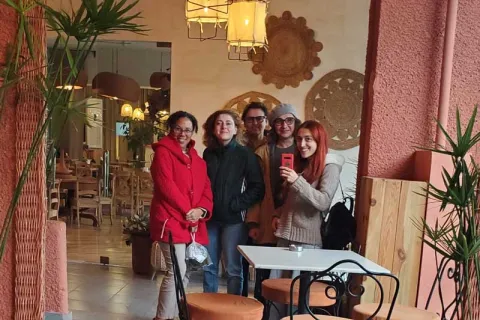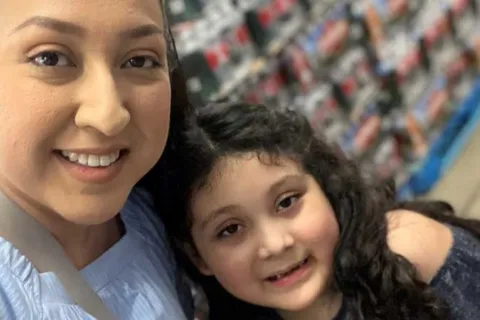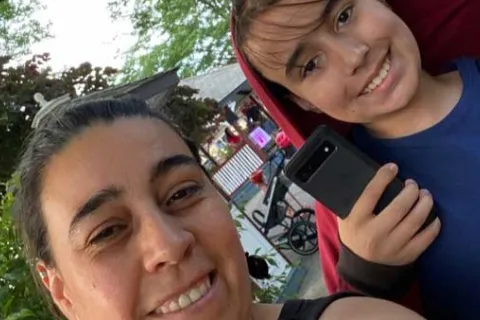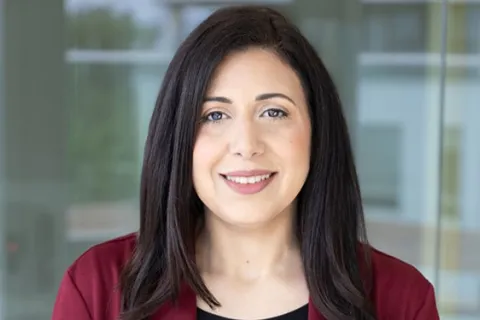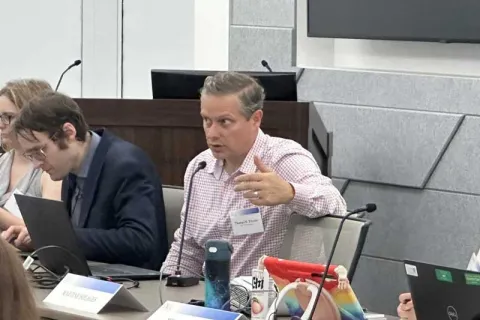Bringing family-centered support to the Latino community
When Georgina Perez Liz immigrated from Mexico to Philadelphia 18 years ago, she couldn’t have predicted how deeply her life would intertwine with the world of autism. After her son Xavier was diagnosed with autism, she shifted her career from neuroscience to autism research, dedicating herself to empowering Latino parents with the tools they need to support their children. Now, as a researcher at the AJ Drexel Autism Institute, her work in early detection and intervention is making a profound impact on Hispanic and Latino communities both in the U.S. and abroad.
By expanding parent-led programs like the World Health Organization’s Caregiver Skills Training (CST) program—developed with support from Autism Speaks—she’s bridging cultural gaps and creating support systems tailored to the unique needs of Hispanic and Latino families. As she expands her efforts from Mexico to Philadelphia, her commitment to advancing autism research and support continues to grow, bringing hope and actionable solutions to countless families.
Have questions? Contact our Autism Response Team for support in Spanish (1-888-772-9050, ayuda@autismspeaks.org) and English (1-888-288-4762, help@autismspeaks.org)
What got you into the world of autism research?
My oldest son Xavier, who is now a teenager, is on the spectrum. When he was about 2, we started noticing that there were differences in his development, so we pursued early intervention services for him. Even with those services, we had to navigate multiple hurdles to get an autism assessment.
Even as an immigrant in a very privileged position, there were still a lot of barriers. That’s how I first became interested in research on autism diagnosis and parent-led intervention models like CST. Along the way, I met other Latino families who were having a horrendous time navigating the same situation, and I wanted to be an active part in helping them navigate this process, especially families who were monolingual Spanish speakers.
When Xavier started kindergarten, I started pursuing professional connections to redirect my career into autism research. I thought that was a good next step for me—I knew that my medical background and experience in neuroscience would bring an important perspective for autism research, but on the personal side, I also knew that autism was in my life and I wanted to make my work feel more meaningful. I started to volunteer with local parent peer support groups, which has given me an opportunity to help families navigate the diagnosis and understand that they can be powerful advocates for their child.
Through this path that I have been on with Xavier, I learned how important it is to have parents learn about autism at home, because not only can they help their kid, but it also makes them stronger advocates. It’s very valuable to have professional supports and services, both in healthcare and in education, but educating parents gives them a sense of adequacy and efficacy that cannot be replaced with any other services.
Can you tell me a bit about your work?
I’m very interested in advancing autism research in Hispanic populations here in the U.S. and also in Spanish-speaking populations abroad. Most of my work focuses on early detection and early intervention for autism, but I’m particularly interested in parent-mediated intervention. That’s how I became involved with the CST program.
Over the past few years, I have been working with community partners to adapt and implement the CST program for Spanish speakers—first in Mexico and now in Philadelphia. I feel very strongly that the Spanish-speaking populations in both these areas would benefit from this program and that it can be hugely empowering for parents in all settings.
At Drexel, aside from the public health research that we do, a lot of our studies have a clinical component to them. We bring in families for evaluation or even for intervention, and we make it a point to include Spanish-speaking families from the very beginning so that our studies represent this population. For me, this work has helped me come full circle in the sense that I navigated with much difficulty the path to a diagnosis with my child, and now I am helping others access a diagnosis.
What are the biggest barriers that you see facing the Latino and Hispanic autism community?
There’s both a language barrier and a cultural barrier. In the Latin American culture, autism is still associated with a lot of stigma. Because it has behavioral manifestations, it is very often associated with parenting styles, discipline and family dynamics. There’s also a lack of services and supports that are both language-inclusive and culturally sensitive for parents and caregivers that do not deny kids to grow up bilingual and bicultural.
How does the CST program address the unique needs of Hispanic and Latino families?
I love CST because it takes advantage of everyday activities to help parents establish a stronger bond and better communication with their child, and it also helps them learn how to support their child in these daily activities. For Latin American families and families with Hispanic backgrounds, all these family routines are very important. Latino and Hispanic cultures are very family-centered—family is one of the axes that rules our society. Making parents be an active part of their child’s learning and development is really empowering, because Latino parents are already really involved and wanting to be a part of that for their child.
What has been the most rewarding aspect of your work?
For me, it’s been rewarding to have conversations with parents where I deliver their child’s autism diagnosis in a hopeful and action-oriented way. I find that a lot of families are lost and disoriented by the overwhelming amount of information that they find online, and they cannot necessarily discern which advice to follow. Every time I speak with a family, they talk to me about sleepless nights scrolling on the internet looking for something that can help them help their child.
I often have conversations with parents about what they can do to support their child and the benefits of having an autism diagnosis. And they say that those conversations give them hope, and I really feel that that’s very rewarding.
How can families get involved with Caregiver Skills Training?
We will begin recruitment for our Philadelphia CST site in the coming weeks, so if you are a Spanish-speaking parent or caregiver in Philadelphia who is interested in being involved, please contact me at gmp69@drexel.edu.
Parents in other communities can also look for a CST site near them, or participate in the virtual CST program, eCST.
Learn more at autismspeaks.org/CST.
Support the expansion of caregiver skills training in the United States by asking Congress to pass the Autism Family Caregivers Act.







